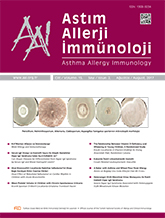


The genera of molds that most often cause allergic symptoms are Alternaria, Aspergillus, Cladosporium and Penicillium. The most frequently implicated genera in children are Cladosporium in Nordic countries, and Alternaria in the Mediterranean region and North America. Although the prevalence of sensitization to commercial fungal extracts is approximately 3% in epidemiologic studies, the sensitization rate may increase up to 80% in selected patients, particularly in those with asthma. Alternaria has been increasingly recognized as a risk factor for the development and persistence of asthma, asthma severity, and potentially fatal asthma exacerbations. Additionally, mold allergy could result in a more severe course of asthma or rhinoconjunctivitis. Presently, the diagnosis and allergen immunotherapy of mold allergy is hindered by the poor quality of most of the commercially available extracts. There are only a few randomized double-blind placebo-controlled studies that have evaluated the efficacy of immunotherapy with Alternaria extracts against mold allergy in patients with respiratory allergic diseases (rhinitis and asthma). Current reviews demonstrate that the clinical efficacy of immunotherapy with fungal extracts has been shown in actively treated patients in at least 4 controlled trials, with two fungal species including Alternaria alternata and Cladosporium herbarum.